hot air balloon

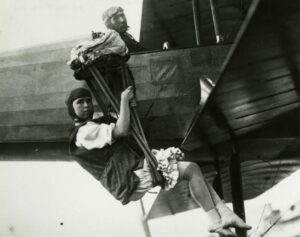 Personally, I see no reason to jump out of a perfectly good airplane, but I know that there are countless numbers of people who absolutely love the thrill of doing just that. In fact, before planes were invented there were parachutes. In 1783, gutsy inventor Louis-Sebastian Lourmand made the first-ever recorded successful parachute jump with a rigid-frame cloth parachute 14 feet in diameter. He, of course, jumped from a balloon, because there were no planes then. I can’t imagine how that jump went. The parachute was not soft and flexible, but rigid!! My mind can see so many things going wrong with that jump. In the early years of parachute jumping, the jumpers were men, because women were considered far too “fragile” and “delicate” for such activities, so I doubt if it would have even been allowed, had a woman asked.
Personally, I see no reason to jump out of a perfectly good airplane, but I know that there are countless numbers of people who absolutely love the thrill of doing just that. In fact, before planes were invented there were parachutes. In 1783, gutsy inventor Louis-Sebastian Lourmand made the first-ever recorded successful parachute jump with a rigid-frame cloth parachute 14 feet in diameter. He, of course, jumped from a balloon, because there were no planes then. I can’t imagine how that jump went. The parachute was not soft and flexible, but rigid!! My mind can see so many things going wrong with that jump. In the early years of parachute jumping, the jumpers were men, because women were considered far too “fragile” and “delicate” for such activities, so I doubt if it would have even been allowed, had a woman asked.
That all changed when a little woman named Georgia “Tiny” Broadwick came on the scene. Born to parents George and Emma Ross on April 8, 1893, Georgia Ann Thompson weighed about 3 pounds. She was the last of seven daughters, and because of her size, she was given the nickname “Tiny” since she weighed only 85 pounds and was 4 feet 8 inches tall, when she was fully grown. In those days, women often married very young, and at age 12, Tiny Broadwick had married and, at 13, had a daughter, Verla Jacobs (later, Poythress). By 15, Broadwick was abandoned by her husband and working in a cotton mill. It was then that she saw Charles Broadwick’s World Famous Aeronauts parachute from a hot air balloon. She was hooked and decided to join the travelling troupe. She left her daughter in the care of her parents. She later actually became Broadwick’s adopted daughter, to ease travel arrangements. Rumors also flew that she was his wife, but although her own family was later unclear on the relationship, that was not proven.
Although she would eventually make her jumps from airplanes, in her early career Broadwick jumped from balloons. Nevertheless, when the time came, Georgia “Tiny” Broadwick was not afraid, and she became the first woman to jump from an airplane too. She loved parachuting, and between 1913 and 1922 she completed over 1,100 jumps. Making that many jumps taught her that parachutes needed some improvements. So, she invented the ripcord, which is standard on every parachute to this day. Broadwick is also the only female member of the Early Birds of Aviation.
In 1914, she demonstrated parachutes to the US Army. At that time, the Army had a small fleet, but they were just as likely to crash as fly. I suppose that in that situation, knowing how to get out of the plane was crucial. Nevertheless, the Army was reluctant to adopt the parachute at first. They watched Tiny fearlessly dropped 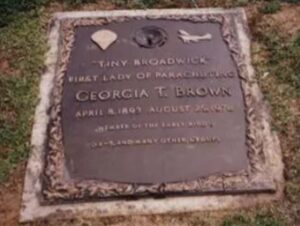
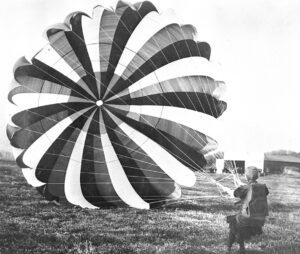 from the sky. Then, on one of her demonstration jumps, the static line became entangled in the tail assembly of the aircraft. As a solution, Tiny cut off the static line and deployed her chute manually on her next jump, thus becoming the first person to jump free-fall. This demonstrated that pilots could escape aircraft by using what was later called a ripcord, and for that she is now famous. Broadwick died in 1978 and was buried in Sunset Gardens in Henderson, North Carolina.
from the sky. Then, on one of her demonstration jumps, the static line became entangled in the tail assembly of the aircraft. As a solution, Tiny cut off the static line and deployed her chute manually on her next jump, thus becoming the first person to jump free-fall. This demonstrated that pilots could escape aircraft by using what was later called a ripcord, and for that she is now famous. Broadwick died in 1978 and was buried in Sunset Gardens in Henderson, North Carolina.
 Imagine living in a country where you could only go places and do things that the government allowed you to. Communist countries are that way, but in East Berlin things had taken a much more sinister turn. Throughout the 1950s and into the early 1960s, thousands of people from East Berlin crossed over into West Berlin to reunite with families and escape communist repression. The Soviet Union had rejected East Germany’s original request to build the wall in 1953, but with defections through West Berlin reaching 1,000 people a day by the summer of 1961, Soviet leader Nikita Khrushchev finally relented. The residents of Berlin awoke on the morning of August 13, 1961, to find barbed wire fencing had been installed on the border between the city’s east and west sections. Days later, East Germany began to fortify the barrier with concrete. Construction began on August 12, 1961. The Berlin Wall was actually two walls. The 27 mile portion of the barrier separating Berlin into east and west consisted of two concrete walls between which was a “death strip” up to 160 yards wide that contained hundreds of watchtowers, miles of anti-vehicle trenches, guard dog runs, floodlights and trip-wire machine guns. Overnight, people who had family on the other side of Berlin were no longer able to see them. There was no recourse, and no warning. At first people could see their loved ones across the fence, but when the walls went up that ended too.
Imagine living in a country where you could only go places and do things that the government allowed you to. Communist countries are that way, but in East Berlin things had taken a much more sinister turn. Throughout the 1950s and into the early 1960s, thousands of people from East Berlin crossed over into West Berlin to reunite with families and escape communist repression. The Soviet Union had rejected East Germany’s original request to build the wall in 1953, but with defections through West Berlin reaching 1,000 people a day by the summer of 1961, Soviet leader Nikita Khrushchev finally relented. The residents of Berlin awoke on the morning of August 13, 1961, to find barbed wire fencing had been installed on the border between the city’s east and west sections. Days later, East Germany began to fortify the barrier with concrete. Construction began on August 12, 1961. The Berlin Wall was actually two walls. The 27 mile portion of the barrier separating Berlin into east and west consisted of two concrete walls between which was a “death strip” up to 160 yards wide that contained hundreds of watchtowers, miles of anti-vehicle trenches, guard dog runs, floodlights and trip-wire machine guns. Overnight, people who had family on the other side of Berlin were no longer able to see them. There was no recourse, and no warning. At first people could see their loved ones across the fence, but when the walls went up that ended too.
For almost 2½ years those on one side of the wall were lost to those on the other side of the wall. What the Communist regime didn’t anticipate was the fact that people would still find a way to escape. There were 39 deaths at the Berlin Wall between 1961 and 1963, and a total of 139 between 1961 and the wall’s demolition in 1989. That might not seem like so many, but when you take into account the fact that the people inside East Berlin were so closely watched, that it was almost impossible to get to supplies they needed to plan and carry out their escape attempt. Nevertheless, some people did make it safely across. No one knows for sure exactly how many people reached the western part, but some estimates claim that 5,000 East Germans reached West Berlin via the Wall. Men, women and children snuck through checkpoints, hid in vehicles and tunneled under  the concrete. They used hot air balloons, diverted the train, crossed the river on an air mattress, by swimming, and even by zip line and tight rope. These people really wanted their freedom.
the concrete. They used hot air balloons, diverted the train, crossed the river on an air mattress, by swimming, and even by zip line and tight rope. These people really wanted their freedom.
Finally, on December 20th through 26th or 1963, the Communist regime decided that if they issued 1 day passes to those in West Berlin, maybe it would stop the escape attempts. The East Berliners were not allowed to leave, but the West Berliners could come in and see friends and family members. I can only imagine how the people from West Berlin felt. They wanted to go and see their friends and family, but would they be allowed back out, or was this just a trap? Nevertheless, it was Christmastime, and it had been so long since they had seen them. So, nearly 4,000 West Berliners crossed into East Berlin to visit their relatives. It was all part of an agreement reached between East and West Berlin, over 170,000 passes were eventually issued to West Berlin citizens, each pass allowing a one day visit to communist East Berlin for the Christmas (Passierscheinregelung) season that year.
The day was one filled with moments of poignancy and propaganda. Tears, laughter, and other outpourings of emotions characterized the reunions that took place as mothers and fathers, sons and daughters met again. They were so happy, if only for a short time. Cold War tensions were mixed in too, however. Loudspeakers in East Berlin inundated visitors with the news that they were now in “the capital of the German Democratic Republic,” a political division that most West Germans refused to accept. Visitors were also given a brochure that explained that the wall was built to “protect our borders against the hostile attacks of the imperialists.” They were told of how the decadent western culture, including “Western movies” and “gangster stories,” were flooding into East Germany before the wall sealed off such dangerous trends, and that made it “necessary” to build the wall. West Berlin newspapers berated the visitors for being “pawns” of East German propaganda. Editorials argued that the communists would use these visits to gain West German acceptance of a permanent division of Germany. The visits, and the high-powered rhetoric that surrounded them, reminded everyone that the Cold  War involved very human, often quite heated, emotions. East Berlin allowed these similar and very limited arrangements in 1964, 1965 and 1966. In 1971, with the Four Power Agreement on Berlin, agreements were finally reached to allow West Berliners to apply for visas to enter East Berlin and East Germany regularly, however, East German authorities could still refuse to honor the entry permits. Finally in 1989, at President Ronald Reagan’s insistence, the Berlin Wall came down, and this inhumane treatment of the East German people ended.
War involved very human, often quite heated, emotions. East Berlin allowed these similar and very limited arrangements in 1964, 1965 and 1966. In 1971, with the Four Power Agreement on Berlin, agreements were finally reached to allow West Berliners to apply for visas to enter East Berlin and East Germany regularly, however, East German authorities could still refuse to honor the entry permits. Finally in 1989, at President Ronald Reagan’s insistence, the Berlin Wall came down, and this inhumane treatment of the East German people ended.
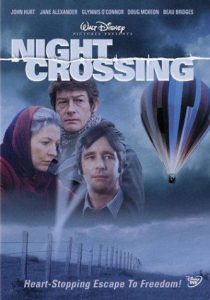
 Years ago, I watched a movie called Night Crossing, which came out in 1982. The movie was based on a true story about two families trapped in East Germany in 1979. The only way they could be free was to escape to the west. Over the years during which Germany was divided, and basically locked down. At first the people felt panic. Many of them had family on the other side, and no way to get to them. It was horrible. Escape attempts while not constant, were met with severe repercussions. I’m sure many people thought that they would always be prisoners in East Germany. Since today marks, the 68th anniversary of the ill fated Soviet blockade of their section of Germany following World War II, I was reminded of the movie I had seen.
Years ago, I watched a movie called Night Crossing, which came out in 1982. The movie was based on a true story about two families trapped in East Germany in 1979. The only way they could be free was to escape to the west. Over the years during which Germany was divided, and basically locked down. At first the people felt panic. Many of them had family on the other side, and no way to get to them. It was horrible. Escape attempts while not constant, were met with severe repercussions. I’m sure many people thought that they would always be prisoners in East Germany. Since today marks, the 68th anniversary of the ill fated Soviet blockade of their section of Germany following World War II, I was reminded of the movie I had seen.
I was so surprised about the elaborate lengths the family had to go to, in order to buy the materials needed to make a hot air balloon, with out arousing suspicions. To buy enough of the silk for the balloon, they had to go to several different locations, and tell the clerks that they were building tents for a scout group to use to go camping. I couldn’t imagine having to lie to a store clerk in order to purchase material, but then I have never lived anywhere, but in a free society, where the individual person had the right to do pretty much what they pleased. That was something that some of the people of that time, in East Germany, had never known.
While the situation was traumatic, I found myself…somehow fascinated with the process, the planning, the forethought, and the tenacity of these families. I found myself rooting for them every step of the way. Rooting for them wasn’t the thing that surprised me, however. It really was how interested I was in all the strategizing, and yes, the danger of it all. I don’t suppose the event felt anything like that to them, however. For them, this was life and death, because if they were caught, they would be killed. They would have one chance to escape, 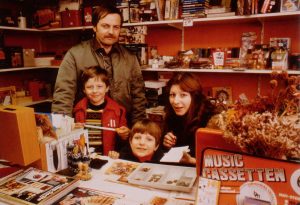
 and one chance only. And they still had to make the crossing, and the landing, without getting caught up in the barbed wire fencing, or landing on a fence somewhere. The whole event, while an exciting story for me, was probably an event that they could not wait to put behind them…and I don’t blame them there.
and one chance only. And they still had to make the crossing, and the landing, without getting caught up in the barbed wire fencing, or landing on a fence somewhere. The whole event, while an exciting story for me, was probably an event that they could not wait to put behind them…and I don’t blame them there.

 On August 13, 1961, in the hours just after midnight, the East German soldiers began laying down barbed wire and bricks as a barrier between Soviet-controlled East Berlin and the democratic western section of the city. It was a day that would change life in Berlin for the next twenty eight years. In the days that followed, a wall was built to permanently close off access to the west. The citizens of East Berlin became prisoners in their own homes and city, in a prison that was built around them. The road between East and West Berlin had become a one way street. If you wanted in, you couldn’t come back out. Families were separated from each other, and those in the West had to make the choice to go be with family in East Berlin…and captivity, or not. The wall became the symbol of the Cold War. It was a literal Iron Curtain, dividing Europe.
On August 13, 1961, in the hours just after midnight, the East German soldiers began laying down barbed wire and bricks as a barrier between Soviet-controlled East Berlin and the democratic western section of the city. It was a day that would change life in Berlin for the next twenty eight years. In the days that followed, a wall was built to permanently close off access to the west. The citizens of East Berlin became prisoners in their own homes and city, in a prison that was built around them. The road between East and West Berlin had become a one way street. If you wanted in, you couldn’t come back out. Families were separated from each other, and those in the West had to make the choice to go be with family in East Berlin…and captivity, or not. The wall became the symbol of the Cold War. It was a literal Iron Curtain, dividing Europe.
When World War II ended in 1945, Germany was divided into four Allied occupation zones. Berlin, the German capital, was likewise divided into occupation sectors, even though it was located deep within the Soviet occupation zone. The future of Germany was a source of contention. Disagreements brought tensions which grew when the United States, Britain, and France moved in 1948 to unite their occupation zones into a single autonomous entity known as the Federal Republic of Germany or West Germany. In response, the Soviet Union launched a land blockage of West Berlin in an effort to force the West to abandon the city. The United States and Britain responded with a massive airlift of food and supplies to West Berlin, and in May of 1949, the Soviet Union ended the blockade in defeat.
That didn’t remove the tensions that plagued the area, however. By 1961 the Cold War tensions were running high again. The East German people became very dissatisfied with life under the communist system. West Berlin was a gateway to the West and Democracy. Between 1949 and 1961, about 2.5 million East Germans fled East Berlin to West Germany. By August of 1961, East Germans were crossing into West Germany at a rate of 2,000 people per day. Many of the refugees were skilled laborers, professionals, and intellectuals, and their loss was having a devastating effect on the East German economy. The Soviets had to figure out a way to stop the exodus, and its devastating effect on the economy. Soviet leader Nikita Khruschev made the decision to close off access from East Berlin to West Berlin.
Then came the night of August 13, 1961. The citizens of East Berlin could no longer freely pass into West Berlin. The West was taken by surprise, and threatened a trade embargo against East Germany as a retaliatory measure. The Soviets responded that such a measure would bring new blockades. The West did nothing, and the East German authorities grew more and more bold. They began closing of more and more checkpoints between East and West Berlin. On August 15, they began replacing barbed wire with concrete. The wall was supposedly designed protect their citizens from the influence of decadent capitalist culture. In realty, it protected the East German authorities from scrutiny as they did what they wanted with out retaliation.
Once it was up, the only way for East Berliners to escape the oppression of their government was to take their chances to get across in whatever way they could dream up. People attempted escape by train, tight rope, zip lines, hot air balloons, through old tunnels, impersonating soldiers, a stolen tank, and swimming. Many of these attempts ended in death for the person attempting escape. It didn’t stop them. They were so determined to live freely. About 5,000 East Germans managed to escape across the Berlin Wall to the West, but the frequency of successful escapes dwindled as the wall was increasingly fortified. Thousands of East Germans were captured during attempted crossings and 191 were killed.
On June 12, 1987 President Reagan made his great “tear down this wall” speech, but the wall remained until 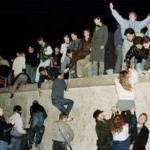
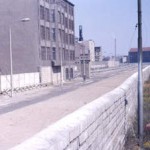 1989, when the democratization movement began sweeping across Eastern Europe. On November 9, 1989 travel restrictions were eased. Jubilant Berliners climbed on top of the Berlin Wall, painted graffiti on it, and removed fragments as souvenirs. The next day, East German troops began dismantling the wall. In 1990, East and West Germany were formally reunited. For those in the free world, it would be almost impossible to completely understand just what Communism was like, but those who lived it, would never forget it, if they even lived through it, which many didn’t.
1989, when the democratization movement began sweeping across Eastern Europe. On November 9, 1989 travel restrictions were eased. Jubilant Berliners climbed on top of the Berlin Wall, painted graffiti on it, and removed fragments as souvenirs. The next day, East German troops began dismantling the wall. In 1990, East and West Germany were formally reunited. For those in the free world, it would be almost impossible to completely understand just what Communism was like, but those who lived it, would never forget it, if they even lived through it, which many didn’t.
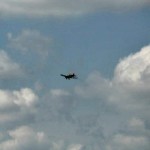 Yesterday, while Bob and I were on a walk, I heard a small plane overhead. Both Bob and I looked up and searched the sky until we found it. It occurred to me that it doesn’t matter if it is a bird, a small plane, a jet, or especially a hot air balloon, we always look up. It’s funny, because we hear cars, kids, dogs, trains, and even music around us all the time, but we don’t always look. We might look if the car or motorcycle is really loud, but just as often, it makes no difference to us. We aren’t really very interested.
Yesterday, while Bob and I were on a walk, I heard a small plane overhead. Both Bob and I looked up and searched the sky until we found it. It occurred to me that it doesn’t matter if it is a bird, a small plane, a jet, or especially a hot air balloon, we always look up. It’s funny, because we hear cars, kids, dogs, trains, and even music around us all the time, but we don’t always look. We might look if the car or motorcycle is really loud, but just as often, it makes no difference to us. We aren’t really very interested.
I don’t think that it is because the things we see and hear on the ground are any more common than the things we see and hear in the sky are. Maybe we just feel the freedom of the air, when we watch something soaring across the sky. I personally love to fly, and I would love to ride in a hot air balloon too. Birds fascinate me …especially the pigeons that circle the downtown Casper  area. When I feel like I am tied down with responsibility, all it takes it to sit and watch the birds awhile, and I feel better. The birds lift some of the weight of responsibility and I feel lighter. Now I can’t say for sure that feeling free is the reason that we look up when we hear a noise in the sky, but it could be one reason.
area. When I feel like I am tied down with responsibility, all it takes it to sit and watch the birds awhile, and I feel better. The birds lift some of the weight of responsibility and I feel lighter. Now I can’t say for sure that feeling free is the reason that we look up when we hear a noise in the sky, but it could be one reason.
I suppose that if we lived in a big city, I would not think so much about planes in the air, since there are probably far more of them than we get in Casper, Wyoming. Still, I have to wonder if they would get excited about seeing a bunch of hot air balloons over their city, the way we do here. Or maybe it’s just me. I suppose that it is entirely possible that other people don’t look up when a plane, balloon, or bird fly over. I have been known to think a little bit differently about things, so maybe other people don’t give it a second thought. Nevertheless, I love to watch the planes fly overhead, look with wonder when a hot air balloon goes over, and even wonder where the birds are headed when I see them flying above me.

And just in case I didn’t look enough like I live in a dream world, I will tell you that I also look at the clouds. I love to see what pictures God might have painted in the sky with them. The moon and stars are also attention grabbers, because of the beauty they have been given. I like to look for satellites at night, or shooting stars, when the sky isn’t to light. The blood moon that is coming in a couple of days will be the second one this year and I am making plans to be up and watching the sky. Maybe it is just me, but I have a tendency to think that it’s not. I think a lot of people are curious about the things that happen in the sky and in space. I have a feeling that we are a bit like little kids in that way. When we hear a sound in the sky, we always look up.

